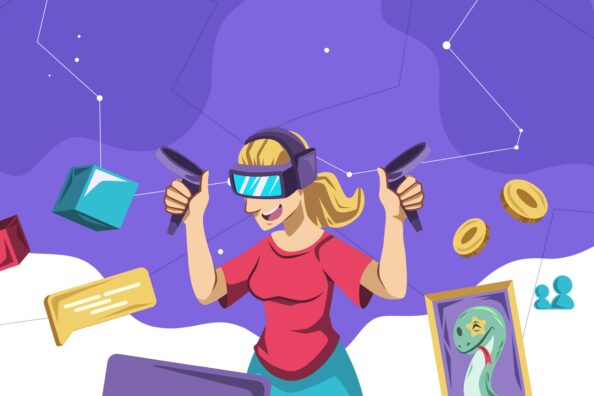
In recent years, the gaming landscape has undergone a radical transformation with the advent of non-fungible tokens (NFTs). These digital assets, verified on the blockchain, have redefined ownership, value, and participation within games.
In this guide, we’ll unpack everything you need to know about NFT games—from the basics to advanced insights—so you can play smarter, earn more, and understand where the industry is heading in 2025 and beyond.
NFT games are blockchain-based video games that use non-fungible tokens (NFTs) to represent in-game items, characters, or land. These assets are:
Unlike traditional games, where in-game items belong to the developer, NFT games allow players to truly own, trade, or sell their digital assets.
| Traditional Games | NFT Games |
|---|---|
| Items are locked in-game | Players own items via blockchain |
| Limited or no resale value | NFTs can be traded or sold on marketplaces |
| Centralized servers | Decentralized, peer-to-peer validation |
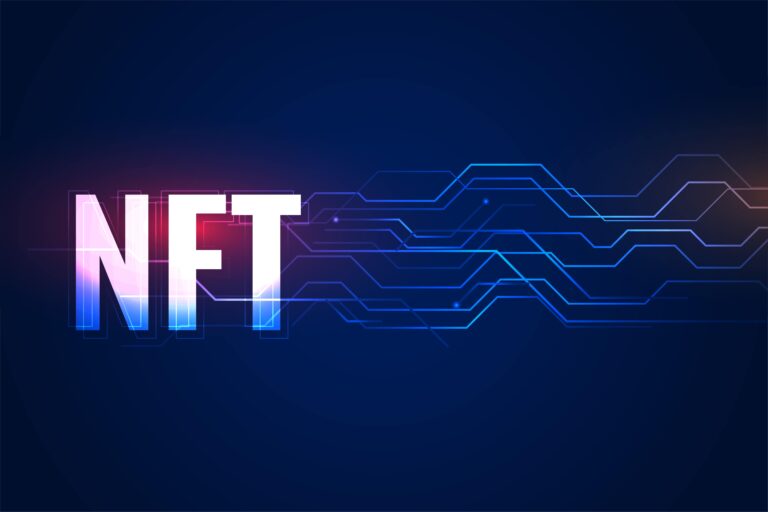
NFT gaming has matured significantly over the years. Here’s a brief timeline of key milestones:
Technological breakthroughs like Layer 2 solutions, cross-chain compatibility, and AI-generated assets have reshaped game design and accessibility.
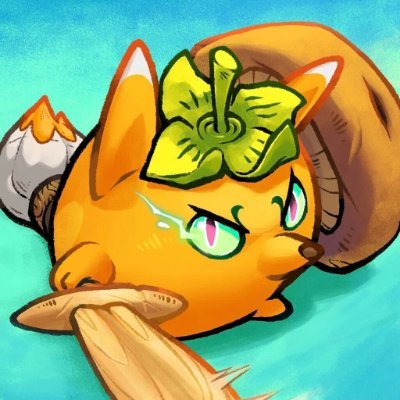
Axie Infinity currently has around 2.7 million daily active users at its peak, with numbers stabilizing in 2025 after the earlier boom. The project is expanding with a new MMO initiative called Atia’s Legacy, and is introducing dynamic NFTs to revive user engagement.
Price-wise, its AXS and SLP tokens are trading well below their all-time highs. Still, analysts note potential for moderate growth if new gameplay mechanics and token utility are successfully launched.
Axie Infinity is a Pokemon-inspired game in which users collect, breed, and train Axies, NFT-based digital pets. Players must purchase at least three Axies to join the game. Axie Infinity uses blockchain technology to pass on traits, strengths, and weaknesses to future generations of Axies.
Players can complete quests or compete against other users to earn Smooth Love Potion (SLP), the platform’s native ERC-20 token. The SLP tokens are required to breed new Axies. There is also a governance token, the Axie Infinity Shard (AXS), which can be used for staking.
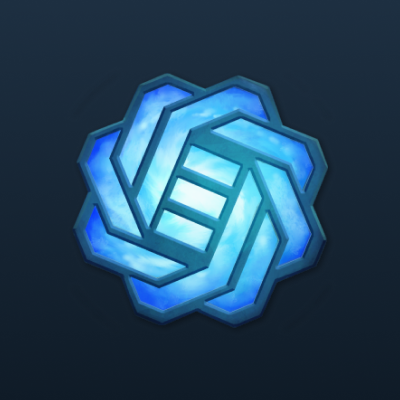
In mid-2025, Gods Unchained successfully migrated to Immutable zkEVM, improving scalability and smart contract capabilities. A new staking model for GODS tokens is expected to launch in Q3 2025, further integrating Web3 mechanics.
The game continues to expand its card set with updates like “Fallen Age” and is building interoperability within the Immutable ecosystem. Gods Unchained is a free-to-play trading card game where users collect cards by either purchasing them or winning player-versus-player battles. Users earn experience points for every battle they win. When they have enough experience to advance to the next level, they receive a new pack of cards.
Each card is represented by an ERC-20 token, which can be sold on the open market. Users who sell these cards receive GODS, the platform’s native token, as payment.

The Sandbox remains a top-tier metaverse platform in 2025, enabling users to build games, museums, and experiences on NFT-based land. Users actively contribute content and earn SAND tokens for their engagement.
SAND price forecasts for 2025 suggest a range between $0.27–$0.30 in conservative scenarios, with upside potential depending on broader metaverse adoption. The team continues to enhance creator tools and marketplace functionality. The Sandbox is one of the most active blockchain-based NFT gaming platforms. It allows players to own and customize different parcels of land represented by NFTs on the Ethereum blockchain.
Users can build virtual games, museums, and many other creations. In addition, players can create characters and earn the platform’s native SAND tokens. The Sandbox ecosystem also rewards everyone who contributes to its development.

Sorare has maintained momentum through official football league licenses (including Eredivisie) and enhanced card dynamics. It now incorporates AI features for game strategy and weekly NFT-based tournaments.
Looking ahead, Sorare is expected to introduce new seasonal leagues and dynamic cards tied to real-time player performance. The ETH-based marketplace remains central to its economy. Sorare is a free-to-play NFT game with collectible and tradeable soccer player cards from real life. After completing the registration process, users receive a pack of cards. Players can create their fantasy football team and compete with other players to unlock more cards. They also have to buy rare cards with ETH to advance in the leagues and win prizes.
The game includes four card categories: common, rare, super rare, and unique. Players can use their cards to create a team of five players, choose a captain, and participate in weekly competitions. In addition, users can sell their cards on an NFT marketplace.

Splinterlands launched several key updates in 2025, including the Voucher Trade Hub and a major new card set called “Conclave Arcana.” These updates help reinforce its position in the Web3 TCG market.
SPS token holders play a role in game governance and reward allocation. The game continues to run on the Hive blockchain, offering fast transactions and low fees. Splinterlands is a free-to-play tradeable card game that allows users to earn rewards for winning card matches. Players can also compete in skill-based matches to build their card collection. Splinterlands lets users buy, sell, and trade their virtual assets. The game features a native token called the SPS, which gives players the power to influence the future of the game.
Players must purchase a starter pack of cards, create a Steam account, and reveal their purchased cards in Splinterlands to begin battling other users and earning rewards. The game operates on the Hive blockchain, which ensures transparency and low fees.
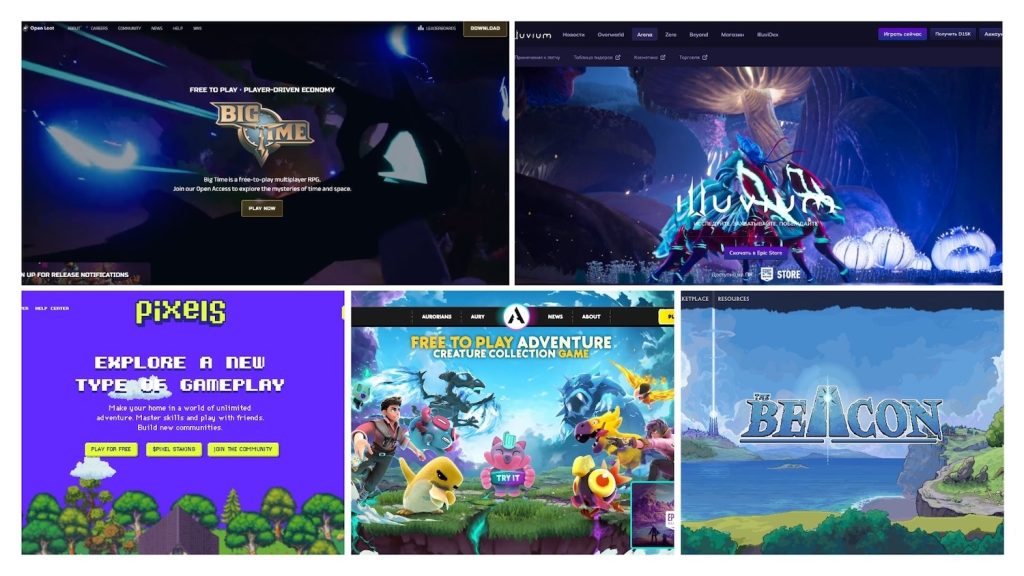
Each blockchain offers unique advantages in terms of scalability, fees, and developer ecosystems. If you’re exploring different chains for NFT game development, this overview of blockchain platforms may help.
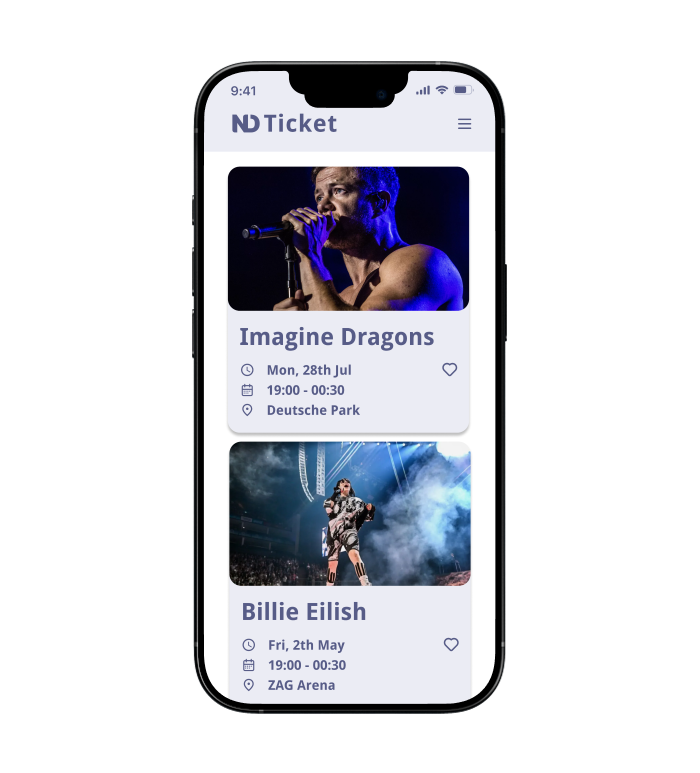
NFT games come in several distinct formats depending on the gameplay, token mechanics, and monetization model. Two of the most common types are Play-to-Earn (P2E) and Free-to-Play NFT games. However, newer formats are also emerging in 2025 that blend blockchain gaming with physical activity, content creation, and hybrid token models.
NFT games come in several distinct formats depending on the gameplay, token mechanics, and monetization model. Two of the most common types are Play-to-Earn (P2E) and Free-to-Play NFT games.
Play-to-earn (P2E) NFT games allow users to generate an income stream by playing. Players are typically rewarded with fungible tokens, and sometimes they may be given NFTs. The more a user plays, the more rewards they can earn.
The most common use of non-fungible tokens in a P2E game is item crafting. Therefore, users play until they receive a token that enables them to craft a specific item to advance in the game.
Regular (fungible) tokens are given to users as a reward for playing the game regularly. Unlike these tokens, NFTs are often distributed to players by chance due to their unique nature. Play-to-earn games are particularly popular in low-income countries, where people try to supplement their fixed income or social security benefits by playing such games.
Examples:
Free-to-play NFT games allow players to join and start playing without any upfront crypto or NFT purchase. These games often offer starter assets for free and may provide earning opportunities through gameplay achievements, rewards, or drops.
Unlike traditional free-to-play games where in-game items are centrally owned, free-to-play NFT games give players ownership of earned items as NFTs. This model is especially appealing to newcomers to Web3 who want to explore blockchain gaming without financial risk.
Examples:
Some games reward players directly with in-game NFTs rather than tokens. These NFTs often represent rare items, weapons, skins, or characters. Players can trade them on in-game marketplaces or external NFT platforms.
The value of these items typically depends on their rarity, cosmetic appearance, and utility within the game. For example, armor that grants invisibility or swords that do more damage will have a higher value.
The CryptoKitties game is an example of a game that relies on the collectibility of in-game NFTs to drive its gameplay. The element of chance is the only thing that keeps players engaged, while its absence allows them to earn a stable income.
As the video game industry and blockchain continue to interact, newer NFT-based games offer a combination of earning and finding tokens in different ways.
Move-to-Earn (M2E) games reward players for physical activity. By walking, running, or completing fitness tasks while using a mobile app or wearable device, players earn tokens or NFTs. These games often include health-tracking mechanics and appeal to lifestyle-focused users.
Examples:
Create-to-Earn games enable users to build and sell in-game content, such as characters, levels, assets, or even entire games. These games provide integrated tools for creators and reward them with tokens or royalties for their work.
If you’re a creator looking to enter Web3 gaming, you can also reach out to ND Labs — we help teams and individuals develop and launch Create-to-Earn ecosystems, from NFT integration to tokenomics design. Learn more on our Telegram Mini App Development page. We help teams and individuals develop and launch Create-to-Earn ecosystems, from NFT integration to tokenomics design.
Examples:
Many new NFT games in 2025 blend two or more models. For example, a game might allow free access (F2P), offer earnable NFTs through gameplay, and also reward physical or social actions.
Examples:
NFT games generate revenue through token economies, marketplace fees, in-game upgrades, and secondary NFT sales. Players also earn by trading or staking in-game tokens.
Understanding your potential return on investment (ROI) can help you decide if a game is worth your time and money.
You start playing Pixels and invest in some basic assets:
| Asset | Cost (USD) |
| NFT Land | $120 |
| Tools | $80 |
| Game tokens | $50 |
| Total Investment | $250 |
After 3 months of playing:
Note: ROI can vary greatly based on market trends, token prices, gameplay involvement, and external risks.
Technical Deep Dive: How NFT Games Work
Blockchain Layer
NFT games are built on blockchains that serve as transparent, immutable ledgers. They record ownership of digital assets such as characters, items, and currencies. Ethereum remains the most popular foundation for NFT games, though chains like Solana, BNB Chain, and Avalanche are gaining ground.
To address high gas fees and scalability challenges, many NFT games use Layer 2 solutions like Arbitrum, Polygon, or Immutable X. These reduce transaction costs while maintaining the security and decentralization of the underlying Layer 1.
Smart Contracts
Smart contracts automate game logic on the blockchain. They control asset minting, transfers, item drops, rewards, battles, and other core mechanics. This enables provable fairness and transparency in gameplay.
For example, in Gods Unchained, smart contracts manage card issuance and match outcomes, ensuring that users retain control over their decks and rewards. In Axie Infinity, breeding Axies, distributing rewards, and marketplace trading are all governed by smart contracts.
In-Game Economies
NFT games often implement dual-token models to balance gameplay and governance. One token (utility) is used for in-game actions, while the other (governance) allows holders to vote on updates or treasury allocation. Examples include:
- AXS + SLP in Axie Infinity
- ILV + SILV in Illuvium
- GODS + ETH in Gods Unchained
Treasuries are often established to fund community grants, development, and rewards. Sustainable economies rely on controlling inflation, encouraging player reinvestment, and creating real demand for NFTs.
Interoperability
A key frontier in NFT gaming is interoperability — the ability to use the same NFT assets across different games or platforms. Protocols like LayerZero, Omnichain NFTs, and Wormhole aim to standardize asset transfers across chains and ecosystems.
Imagine owning a weapon skin that works in both a shooter and a strategy game — interoperability could redefine how we view virtual ownership.
What Are the Benefits of NFT Games Compared to Traditional Video Games?
NFT games offer several advantages over traditional video games by leveraging blockchain technology and decentralized ownership:
True Ownership of Assets
In traditional games, in-game items are stored on centralized servers and cannot be truly owned or traded. NFT games give players full control of their digital assets, allowing them to sell, trade, or transfer items freely.
Play and Earn
Many NFT games introduce earning mechanics through play-to-earn or staking systems, enabling users to turn time spent gaming into potential income.
Open Marketplaces
Items in NFT games can often be sold on third-party marketplaces like OpenSea or Magic Eden. This enables a broader economy beyond the game developer’s ecosystem.
Interoperability
Thanks to blockchain standards (like ERC-721 and ERC-1155), some NFTs can be used across multiple games or platforms—something rarely possible in traditional gaming.
Transparency and Security
All transactions and ownership are stored on public blockchains, offering greater transparency and reducing fraud or unauthorized changes.
Community-Driven Development
Many NFT games allow players to vote on updates or submit proposals using governance tokens, making them active participants in the game’s evolution.
The Future of NFT Gaming: Trends and Predictions
Emerging Technologies
The integration of emerging technologies is shaping the next phase of NFT gaming. Key innovations include:
- AI-Powered NPCs: Non-player characters that learn and adapt to individual player behavior, offering more personalized and unpredictable gameplay.
- VR/AR Integration: Games are beginning to incorporate virtual and augmented reality features to deliver deeper immersion and more engaging interactions.
- Procedural NFT Generation: Advanced algorithms create unique, on-chain game assets that evolve dynamically based on user interaction or time progression, enabling living NFTs.
These technologies are redefining how users interact with NFT games and opening the door for more complex game worlds and storytelling mechanisms.
Market Forecast
The blockchain gaming industry is projected to reach 400 million users by 2030, driven by mobile adoption, improved UX, and better onboarding experiences.
Major publishers like Ubisoft, Square Enix, and Epic Games are continuing to experiment with blockchain-integrated assets and token economies. Their growing involvement signals a shift toward mainstream acceptance of NFT gaming elements within traditional ecosystems.
Regulatory Outlook
The global regulatory landscape for NFT games is evolving:
- Europe: The EU’s MiCA (Markets in Crypto-Assets) law will be fully implemented by 2026, introducing consistent rules across member states.
- United States: The SEC continues to scrutinize Play-to-Earn models and game tokens, especially when they resemble unregistered securities. Developers must increasingly navigate legal clarity before token launches.
- Asia-Pacific: Japan, South Korea, and Singapore are establishing clearer frameworks, with Japan encouraging self-regulation and NFT marketplaces under licensing models.
Sustainability
As environmental impact remains a concern in blockchain adoption, NFT games are transitioning toward:
- Eco-Friendly Blockchains: Chains like Polygon, Solana, and Immutable X offer significantly lower energy usage compared to Ethereum Layer 1.
- Carbon-Neutral Initiatives: Studios are partnering with climate platforms to offset emissions, while new consensus models like Proof-of-Stake reduce overall carbon footprints.
Sustainability will likely become a competitive advantage for NFT game developers aiming for mass adoption and investor support.

They can be, but profits depend on the game’s economy, your strategy, and market timing.
Not always. Many games now offer free entry or accept fiat payments.
Yes, though local regulations may affect how earnings are taxed or classified.
You may lose functionality, but you still own the NFTs. Some can be resold or reused in other games.
Some of the top free-to-play NFT games include The Beacon, Big Time, and Pixels. These titles offer free access with optional NFT upgrades.
Yes. Many modern NFT games let players start without owning crypto. They provide free starter assets or integrate fiat payment systems.
NFT games make money via in-game token economies, marketplace fees, premium content, and asset sales. Players can earn by selling NFTs or staking tokens.
While blockchain provides transparency, risks include smart contract bugs, scams, and unstable game economies. Use trusted wallets and platforms.
Yes. Tools like Unity, Unreal Engine, Moralis, and Thirdweb make development accessible. Blockchain knowledge (e.g., Solidity, Rust) is key.
NFT games have come a long way from pixel cats and speculative hype. In 2025, they represent a powerful fusion of gaming, ownership, and decentralized finance. Whether you’re here to earn, explore, or build, the opportunities are vast—but so are the risks.